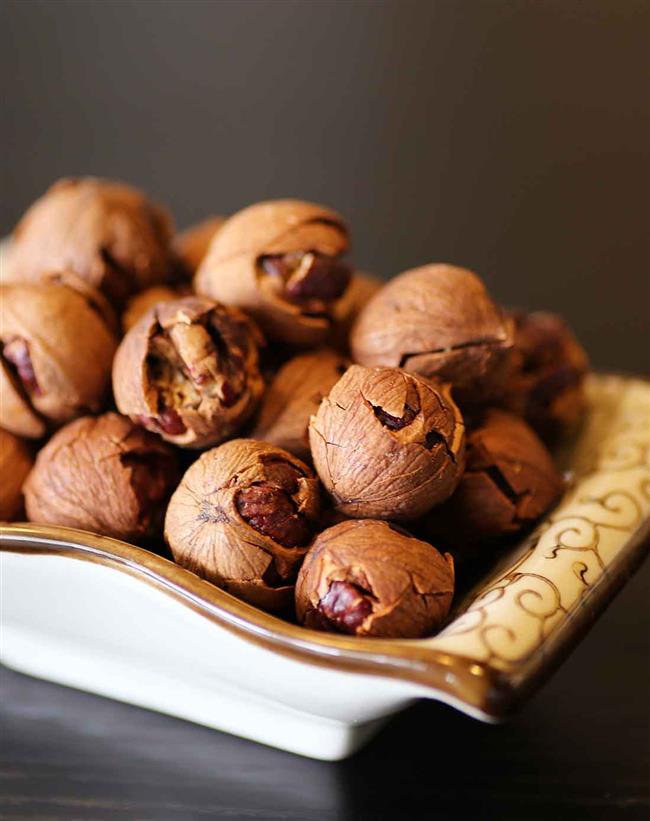Some treats to go nuts over in winter
The 24 Chinese solar terms, which date back thousands of years, embody the rhythm of nature, and the harmony between humans and the world around them.
We are now in Xiaoxue (Light Snow) in Chinese lunar calendar, and snow is coming to northern China and frosts are appearing in the south.
The coldest days are not here yet, but temperatures have already dropped dramatically.
Traditional Chinese medicine says this is now the time to nourish the organs, which are vulnerable to sickness when the temperature goes down, and remove inner dryness when low humidity causes imbalanced energy and discomfort.
In Zhejiang Province, there are two varieties of nuts that increase inner moisture and nourish organs — Chinese hickory and torreya grandis, or Chinese nutmeg. They mainly grow in northern Zhejiang and are also loved by foodies because of their taste.
Late autumn is the annual harvest season, but this year’s production dipped because of low summer rainfall and disease affecting the trees, driving up prices.
But the higher prices don’t dampen people’s enthusiasm and both kinds of nuts are still favorite snacks and big sellers at street stalls and online.

Chinese hickory
Chinese hickory 山核桃
TCM considers winter the best season to sample Chinese hickory — shanhetao — because the rich nutrients can help replenish energy in cold weather.
Lin’an County is the heart of shanhetao production. The small county boasts 500 years of history cultivating these nuts.
This year’s yield amounted to 10,810 tons, 1,900 tons less than last year. The average price is increased to about 20 yuan (US$3) per kilogram.
Peeled shanhetao are more expensive than those in the husk.
Cracking the husk requires a small hammer or good teeth, although many gastronomes consider the effort adds to the enjoyment of the yummy nuts.
Others would rather pay extra to avoid the time and effort.
Street-roasted shanhetao are a favorite snack in Zhejiang, especially in Hangzhou. They are roasted in a wok with a mixture of seasonings — the most popular are salt and butter.
Before roasting, shanhetao are simmered in boiled water to soften the husk and smell. After roasting, the nuts are dried to make them crispier.
Some Lin’an roasting masters have been practising the trade for over 30 years and make sure every nut looks as good as it tastes.
Lin’an has more than 200 workshops and almost 100,000 workers in the industry. The centuries old industry has also moved online, taking the Lin’an nuts around the country.

Torreya grandis
Torreya grandis 香榧
Torreya grandis, or xiangfei, mainly grow in Fuyang District and Zhuji County, where there is plenty of rain and shrouded with mist year round.
This plant is native to Zhejiang, and its cultivation dates back to the Tang Dynasty (AD 618-907).
Here, almost every hamlet boasts hundreds of centuries-old xiangfei trees.
Before the 1990s, only locals enjoyed the harvest, because the delicacy was not widely known.
But in the year of 2000, people in the wider world started becoming aware of what they were missing out on and locals started growing more trees and turned xiangfei into a calling card.
But it takes 15 years for a xiangfei tree to bear fruits, and at least three years for the fruit to ripen. They are also still hand-picked, rather than using long poles, to prevent the fruits being damaged by falling to the ground.
Usually, it takes at least three months to process xiangfei due to the complicated preparation techniques.
And while most other nuts are machine-roasted because it is more efficient, xiangfei are still roasted by hand.
Prices are now about 200 yuan a kilogram.
Xiangfei tastes like pecan. Its nutty aroma stimulates appetite and the crunchy nut nourishes stomach.
In ancient times, people ate them as an essential part of cold weather dietary therapy. Historical records show hand-roasted xiangfei have been eaten for more than 1,000 years.
















